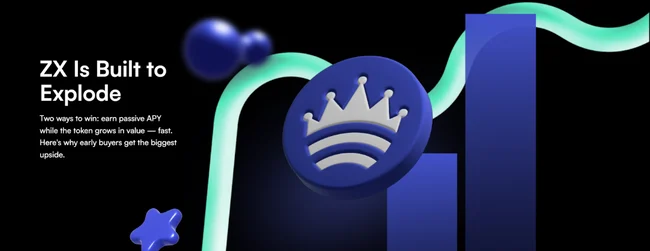AVAX, SUI & ZX: Q4 Outlook for September’s Fastest Growing Altcoins

The sharp rise of AVAX, SUI and ZX in September moved the trio to the top of the altcoin growth chart, eclipsing larger names in both price and trading volume. Each token booked double-digit gains as daily turnover climbed, drawing fresh capital from funds that track alternative coins and from retail traders scanning for momentum ahead of the final quarter.
Focus now turns to the closing months of the year, a stretch often driven by software rollouts, new listings and portfolio rebalancing. Analysts tracking blockchain metrics highlight an Avalanche upgrade, the first wave of ecosystem grants for Sui and an anticipated exchange debut for ZX as near-term sparks that could carry September’s rally into year-end. Broader market forces, including inflation data and central-bank signals, remain the main external factors that could either amplify or cap additional gains.
Avalanche: The Speedy Rival Racing Toward New Peaks
Avalanche burst onto the scene in 2020 with a simple promise: make blockchain activity fast, affordable, and easy to build on. The network can process about 6,500 transactions each second—far more than the 15 or so managed by Ethereum—while keeping average fees near 50 cents. Friendly code that mirrors Ethereum’s language helps developers switch over without a hitch, and specialized “subnets” let projects roll out their own miniature blockchains without crowding the main one. Fueling it all is the AVAX token, which grants voting power, covers fees, and becomes scarcer every time a transaction burns a small portion of supply.
That mix of speed, low cost, and built-in scarcity has caught the market’s eye. AVAX has climbed roughly 26 % in the past year, sits at about $44.50, and boasts an $18 billion valuation—making it the 11th-largest digital asset. Even so, the coin remains nearly 70 % below its 2021 high of $146, leaving plenty of headroom if momentum returns. Forecasts diverge: some analysts point to $57 in 2025 and $100 in 2030, while others float more cautious figures around $41 to $81 for the next few years. Regardless of the exact target, most agree the combination of a capped 716 million supply and a steady burn mechanism tilts long-term math toward greater scarcity.
Sui’s Ripple Effect: How the Water-Inspired Token Keeps Making Waves
SUI began 2023 as a newcomer and quickly stole the spotlight. The coin crossed the one-dollar mark late that year, climbed to $2.18 by March 27, fell back, then bounced to a fresh record of $2.36 in mid-October. Fuelled by a rush of new projects and more than $2 billion locked into its network, it closed the year at $5.35. Christian Williams of the Sui Foundation hailed the surge as proof that an active community can turn bold ideas into real-world momentum. By January 6, the price steadied near $5.20, hinting that the market’s attention had not wandered far.
The platform itself borrows its name from the Japanese word for water, a fitting nod to flexibility and flow. Created by former Meta engineers at Mysten Labs, Sui aims to process many transactions at once, trim costs, and keep assets directly on its ledger. This design helps applications run faster and makes everyday transfers less costly. The SUI coin powers the whole system: holders pay fees, secure the network by staking, and can trade the token on major exchanges.
First-Mover in Gamified Options Trading: Could ZX Be the Next HYPE?

In crypto, the biggest gains often go to first movers in new categories. This cycle has already provided a valid example: HYPE, the token of Hyperliquid, rode the surge in derivatives trading and put on outsized returns for early holders.
Zexpire is aiming to do the same — but in an even fresher niche. It’s the first 0DTE DeFi protocol that turns options trading into a simple, one-click daily play.
One-Click Options, Fixed Risk
Crypto options already see around $3 billion in daily volume, and prediction markets like Polymarket have pushed past $10 billion in cumulative bets.
Zexpire combines the two, wrapping volatility trading into a format anyone can play.
Zexpire removes the complexity of options trading: no more intimidating charts and Greeks. Just one question: Will BTC stay in range today, or break out? Click your choice and let the market play out. The risk is capped — you’ll never lose more than your stake.

Be Among the First to Buy ZX
Like HYPE for Hyperliquid, ZX is the Fuel of Zexpire
Every play on Zexpire runs on its native token ZX, which is currently in seed access at just $0.003, stepping up stage by stage until it reaches $0.025 at listing.
That structure means the earliest participants lock in the lowest entry point, while later buyers pay more.
Beyond price, early buyers also get extras like staking yield before TGE, cashback perks, and beta access — benefits designed to reward the first wave of holders.
First-Mover Advantage: Getting ZX Before It Explodes
Every cycle has tokens that capture a new wave before the market catches on. HYPE did it with derivatives on Hyperliquid, turning early adoption into one of the cycle’s strongest narratives.
Now $ZX is positioned to do the same for gamified options trading — a brand-new category that combines the growth of prediction markets with the simplicity of one-click plays.
Early buyers secure the lowest entry point, while long-term holders stand to benefit from fee burns, buybacks, staking rewards, and platform perks that tighten supply and reward participation.
Buy $ZX, the Next Breakout Token
Conclusion
September’s rally positions AVAX and SUI for further gains in the coming quarter. Both chains logged sharp rises in users and fees, while new apps kept developer interest high. Liquidity has followed, helping each coin hold the strongest levels seen since early summer. Market watchers now look for sustained volume to confirm that momentum.
Zexpire offers a different path. The platform turns crypto’s sharp moves into a daily range game that needs only one click. Losses stop at entry, with no liquidations or margin calls. Every round uses $ZX for stakes, discounts, and future buybacks, locking in demand from the start. Early entry into $ZX gives access to a token designed to grow with each swing, placing this newcomer beside AVAX and SUI as a leading prospect for Q4.
Get more information about Zexpire ($ZX) here:
- Site: https://zexpire.com/
- Telegram: https://t.me/zexpire_0dte
- X: https://x.com/Zexpire_0dte
You May Also Like

Analysts Say PancakeSwap (CAKE) Could Rally Soon – Here’s What the Charts Signal

Powell says young Americans face toughest job market in years
